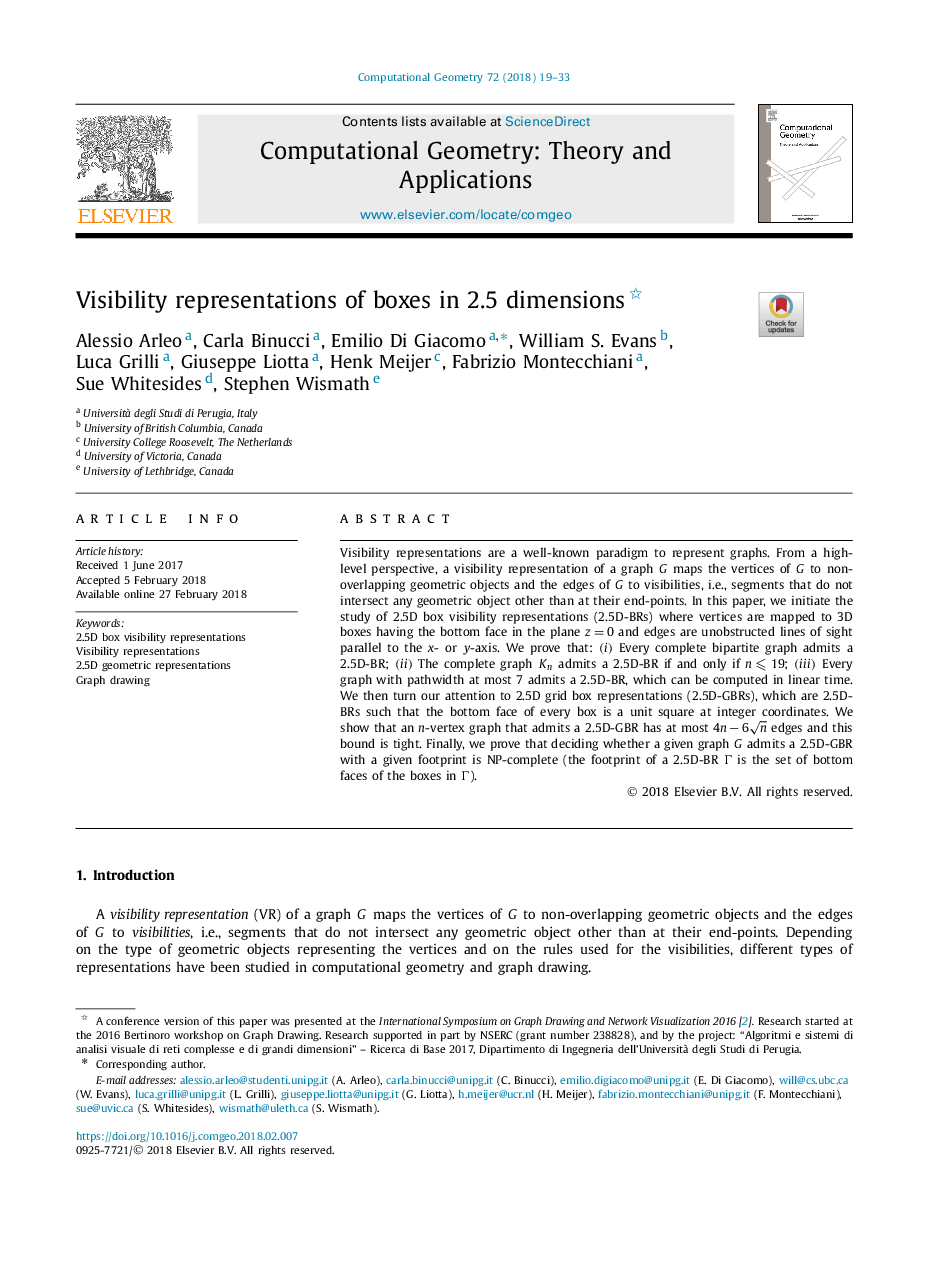| Article ID | Journal | Published Year | Pages | File Type |
|---|---|---|---|---|
| 6868441 | Computational Geometry | 2018 | 15 Pages |
Abstract
Visibility representations are a well-known paradigm to represent graphs. From a high-level perspective, a visibility representation of a graph G maps the vertices of G to non-overlapping geometric objects and the edges of G to visibilities, i.e., segments that do not intersect any geometric object other than at their end-points. In this paper, we initiate the study of 2.5D box visibility representations (2.5D-BRs) where vertices are mapped to 3D boxes having the bottom face in the plane z=0 and edges are unobstructed lines of sight parallel to the x- or y-axis. We prove that: (i) Every complete bipartite graph admits a 2.5D-BR; (ii) The complete graph Kn admits a 2.5D-BR if and only if n⩽19; (iii) Every graph with pathwidth at most 7 admits a 2.5D-BR, which can be computed in linear time. We then turn our attention to 2.5D grid box representations (2.5D-GBRs), which are 2.5D-BRs such that the bottom face of every box is a unit square at integer coordinates. We show that an n-vertex graph that admits a 2.5D-GBR has at most 4nâ6n edges and this bound is tight. Finally, we prove that deciding whether a given graph G admits a 2.5D-GBR with a given footprint is NP-complete (the footprint of a 2.5D-BR Î is the set of bottom faces of the boxes in Î).
Keywords
Related Topics
Physical Sciences and Engineering
Computer Science
Computational Theory and Mathematics
Authors
Alessio Arleo, Carla Binucci, Emilio Di Giacomo, William S. Evans, Luca Grilli, Giuseppe Liotta, Henk Meijer, Fabrizio Montecchiani, Sue Whitesides, Stephen Wismath,
